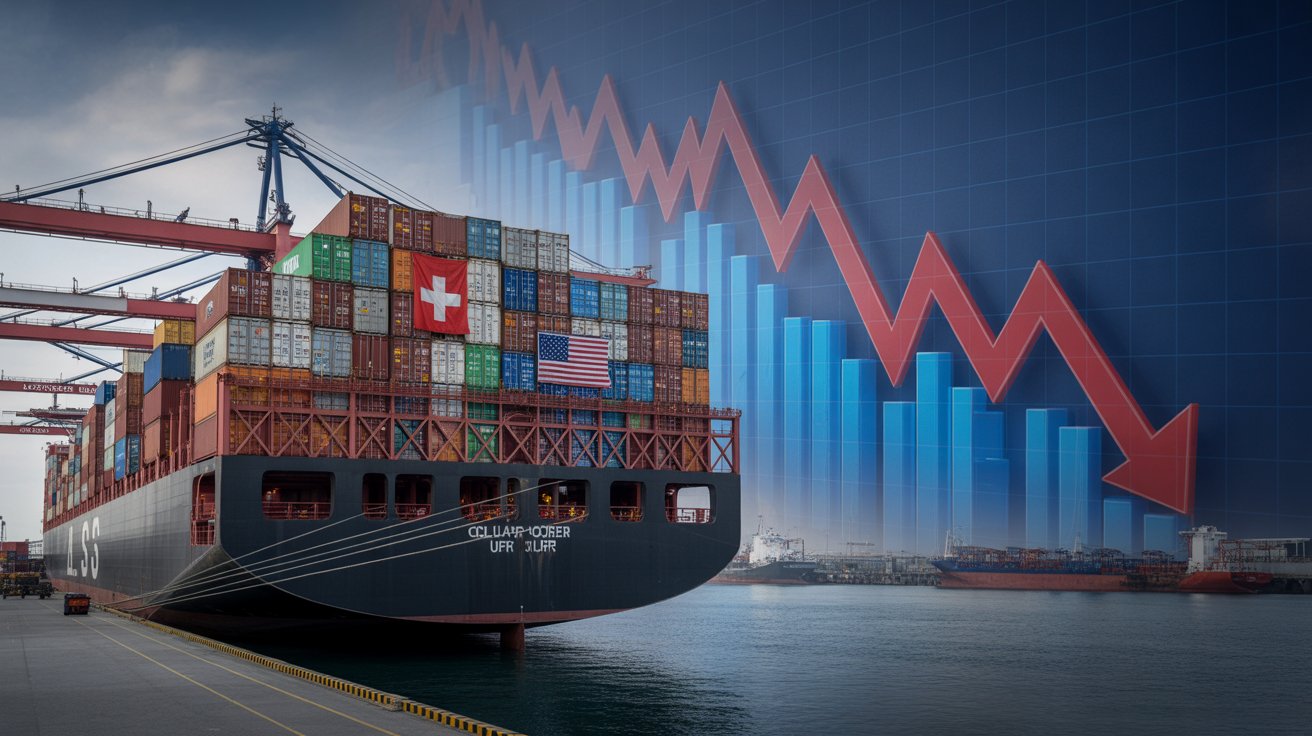
In January 2025, Swiss exports to the United States collapsed following the imposition of a 39% tariff. This sudden policy change, driven by U.S. trade protection measures, has sent shockwaves through global markets. Switzerland, known for its luxury goods, precision instruments, pharmaceuticals, and financial services, now faces one of its most significant trade hurdles in recent history.
This article will explain why this tariff was introduced, how it impacts both economies, and what it means for investors, businesses, and consumers in the year ahead.
Why the U.S. Imposed a 39% Tariff on Swiss Goods
The U.S. government has increasingly turned to protectionist trade policies to protect domestic industries. In this case, the tariff on Swiss imports targeted sectors like:
- Luxury watches and jewelry (a multi-billion-dollar Swiss export industry).
- Pharmaceuticals and medical products (where Switzerland is a global leader).
- Machinery and precision instruments, critical for U.S. manufacturers.
The justification was to reduce reliance on foreign imports and encourage local production. However, experts warn that this could backfire, as U.S. consumers may face higher prices and fewer premium-quality options.
The Immediate Impact on Swiss Exports
According to preliminary trade data, Swiss exports to the U.S. plunged by more than 40% in the first month after the tariff was enforced.
- Luxury watch exports dropped by 55%, as American buyers postponed purchases.
- Pharmaceutical exports declined by 32%, disrupting supply chains in healthcare.
- Machinery and equipment exports fell by 38%, hitting U.S. manufacturers reliant on Swiss precision.
This decline not only hurts Switzerland’s economy but also reduces availability of high-end goods for American consumers.
How This Affects Global Trade in 2025
The Swiss-U.S. trade tension is just one example of a larger global trend toward trade fragmentation.
- Europe Reacts: The European Union may seek to strengthen ties with Switzerland, balancing out U.S. losses.
- Currency Markets: The Swiss franc could strengthen as investors view Switzerland as a safe-haven asset amid trade tensions.
- Inflation Pressure in the U.S.: With higher tariffs, U.S. buyers may face rising costs, pushing inflation back up.
- Luxury Market Shift: Swiss watchmakers may pivot toward Asian markets (China, India, Middle East) to make up for lost American demand.
Investor and Business Takeaways
If you are an investor, entrepreneur, or business owner, here are the key insights:
- Diversify investments: Companies heavily reliant on Swiss exports to the U.S. could face earnings pressure. Watchmakers, pharma firms, and precision manufacturers are particularly at risk.
- Look to currency hedges: The Swiss franc (CHF) may see volatility, creating opportunities in forex trading.
- Monitor inflation trends: U.S. tariffs could push up consumer prices, influencing Federal Reserve rate decisions in 2025.
- Watch global supply chains: Healthcare and manufacturing may face disruptions, creating opportunities for local producers.
Conclusion
The 39% tariff on Swiss exports to the U.S. is reshaping trade flows and sparking concerns about economic nationalism in 2025. For investors, this is a signal to monitor global trade policies closely, hedge against risks, and diversify into markets less exposed to political shocks. For businesses, it’s a reminder that adaptability is key in an era of rapidly shifting trade dynamics.
Swiss Exports, US Tariffs, Global Trade, Trade War 2025, Investing, Swiss Franc, Luxury Watches, Economy 2025, US Markets, Finance News